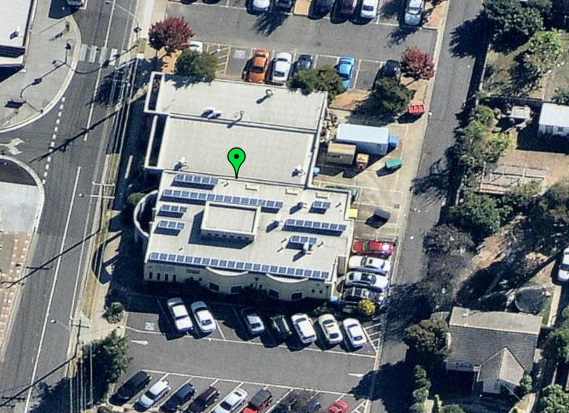Doctors’ surgeries and medical centres are among the best candidates for rooftop solar in Australia. Surgeries tend to use the most electricity during daylight hours; without solar, they pay their electricity company (the ‘retailer’) a lot for each unit that they draw from the grid.
But medical practices that go solar can meet a good proportion of their energy needs themselves – thereby cutting down on the amount that they need to buy from the grid.
3 reasons why solar is great for medical practices
1. Doctors’ surgeries and medical practices use a significant amount of energy during daylight hours
The best way to get value out of a solar system is by using the solar energy directly, as it is being produced. With typical operating hours between 9am and 5pm, surgeries are well within the ‘solar window’ and easily able to take advantages of the benefits of going solar.
2. Doctors’ surgeries and medical practices tend to have small roofs
Frequently located in residential buildings or small office buildings, surgeries often have limited roof space. While this may at first seem like a disadvantage, in fact it tends to make it easy to choose a system size, thus ensuring that a large proportion of the solar energy produced is ‘self-consumed‘.
15kW solar system for a medical centre in Melbourne, VIC. Tender managed by Solar Choice.
3. Possible eligibility for solar feed-in credits
Another benefit of having a relatively small solar system (often befitting for a surgery or medical centre, as explained above) is that it’s more likely that the system will be able to earn solar feed-in credits. One of the biggest downsides to commercial-scale solar power (as opposed to solar on the residential side) is that commercial systems tend to be larger – and larger systems are not always eligible to generate feed-in credits.
There is no hard and fast rule around which size of solar system can or cannot earn a feed-in tariff (this depends on the state, local electricity network and even the surgery’s choice of electricity retailer), but the upper limit tends to be 10kW (for single phase connections) or possibly up to 30kW (for 3-phase connections – notably Queensland and Victoria).
Bonus reason: Keep critical equipment & vaccine fridges running during blackouts by adding batteries
One more reason that a medical centre can potentially benefit from solar is battery backup power. Most grid-connected solar systems these days are installed without battery storage, but the need for keeping fridges and lights on in the event of a grid power failure could make batteries an attractive option for medical centres where prolonged outages could mean spoiled or melted medical specimens and goods. Having a battery bank can also help to shave a bit more off of electricity bills on the days that it’s not functioning in a more important capacity.
What size solar system for a medical centre
There is no upper limit to the size of system that a medical centre or surgery can install (or benefit from), but in our experience managing tenders for dozens of practices around the country, systems are generally between 5kW and 30kW.
30kW solar system for a medical practice in Newcastle, NSW.
15kW solar system for Dovecare Medical Centre in Doveton, VIC.
What’s the typical payback period for solar on a medical practice or surgery?
According to a number of business cases that Solar Choice’s team have compiled for medical centres and doctors’ surgeries around the country in 2017, payback periods for solar systems typically range between 2 and 5 years, with internal rate of return (IRR) figures between 20% and 30%.
Free, impartial analysis of potential benefits of solar for your business
Request a Free Business Case Analysis & Solar Quote Comparison
Or give us a ring on the number below to discuss your project with one of our team.
Other resources about commercial solar power:
Solar Choice’s monthly Commercial Solar PV Price Index
The Index includes median prices by capital city across popular commercial system sizes. You can view the most recent one here.
Indicative payback periods on commercial solar systems (state by state)
Based on data from nearly 300 indicative business cases that Solar Choice has undertaken for clients.
Commercial Solar Power System Payback Calculator
A tool developed by Solar Choice to help businesses get a rough idea of what system size would provide the best returns for their circumstances.
- Why a big battery could be cheaper than a small battery with the federal rebate? - 19 June, 2025
- Heat Pump Costs – Solar Choice Price Index - 1 June, 2025
- Solar Panel Costs: Solar Choice Price Index | July 2025 - 1 June, 2025


